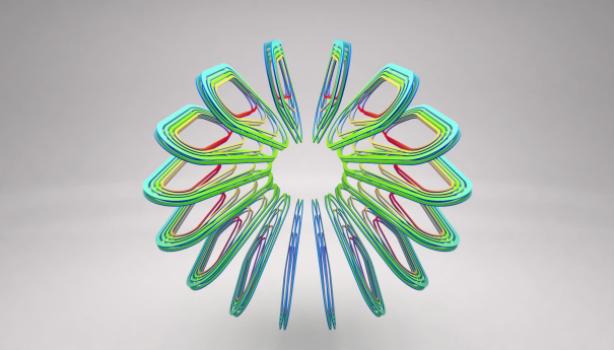Over 27-28 November 2017, 41 experts in gamma-gamma colliders, Compton sources, and Gamma factories came together for the 2017 Photon Beams Workshop, held at the University of Padua’s Botanical Garden.
The event makes the first topical workshop of the ARIES project’s Task 6.6 “Far Future Concepts & Feasibility”, which aims to study the options and practicality of next and future-generation particle accelerators. The technical agenda included presentations on accelerator design, beam commissioning, laser technology, Free Electron Lasers (FELs), experimental programmes, and fundamental physics questions, with reports on studies and experiences from across the globe.
The first big theme of the workshop was Compton sources. Pierre Favier (LAL Orsay) kicked off the event with a comprehensive overview of warm and SC linac-based and ring-based Compton backscattering sources from around the world, covering almost 10 orders of magnitude in photon rates, and photon energies between a few 10s of keV and a few GeV. At present, the ThomX and ELI-NP facilities are under construction in France and Romania, respectively.
Alessandro Variola, Cristina Vaccarezza, and Antonio Falone (INFN Frascati) reported in greater detail on the design and status of ELI-NP, including its remarkable 32-pass laser-pulse recirculator and its luminosity monitor.
Secondly, speakers focused on the theme of photon colliders: recalling the history of gamma-gamma colliders, Valery Telnov (BINP Novosibirsk) discussed the gamma-gamma collider options for linear colliders, highlighting the removal of the spent electron beam as one of the key problems, mitigated by crab crossing. Following this, Telnov proposed the extension the European XFEL at DESY, Hamburg to a photon collider using the spent beams.
Illya Drebot (INFN) presented machine designs and Monte-Carlo simulations for an even lower-energy (MeV class) Gamma-Gamma Collider. Physics motivations for such a collider were discussed by Edoardo Milotti (University of Trieste), who also pointed out the existence of narrow resonances with extremely high cross-section.
Chuang Zhang (IHEP) set out the plan for a 200x200 MeV gamma-gamma collider based on the BEPC injector, in Beijing. The IHEP photon collider could be operational already in four years from now.
Considering secondary/tertiary beam generation, Luca Serafini (INFN Milano) discussed collisions between photons and massive high-energy particles, and made a proposal to use the CERN SPS, LHC or FCC as a gamma source.
Going back up in energy, Frank Zimmermann (CERN) reviewed the conversion of the recirculating linac of the LHeC into a gamma-gamma Higgs Factory, SAPPHiRE. Recent innovations from Atoosa Meseck (HZB) include the occasional bypassing of one linac section, using fast kicker magnets, to avoid the need to a counter-rotating beam, and the use of a low-energy FELs for generating 350 nm photons at 20k kHz repetition rate.
For photon collisions at even higher energy, Eduardo Marin (CERN) presented the photon collider options and associated simulation results for the CLIC linear collider project.
On the third theme of the workshop, two full workshop sessions were devoted to discussing the Gamma Factory. Indeed, Witek Krasny (LPNHE Paris) presented an innovative proposal to convert the LHC into an extremely bright source of Gamma rays, with energies of up to 400 MeV, by exploiting the interaction of laser pulses and partially stripped ion beams. In addition, Krasny pointed out that a low-energy photon collider providing would be a powerful tool for axion searches in a promising range of energy.
Reyes Alemany (CERN) presented the experimental programme at the CERN SPS and LHC, which defines the path towards realizing the Gamma Factory.
Considering FELs, Vittoria Petrillo (University of Milano) analysed their use and possible advantages over standard lasers for the Gamma Factory, with particular reference to the impact of the characteristics of FELs on PSI excitation.
Luca Serafini then delivered two “messages in the bottle” for the Gamma Factory, concerning the loss in efficiency due to the laser and ion wave fronts and due to their respective energy spread.
Representing the atomic physics community, Dima Budker (University of Mainz) discussed the basics of the electronic excitation and decay of partially stripped heavy ions, referring to his and Max Zolotorev‘s study 20 years earlier.
Key elements for all three types of facility are lasers and high-finesse optical cavities, such as Fabry-Perot resonators, or FELs.
Discussing the state-of-the-art in Fabry-Perot resonators, Fabian Zomer (LAL) presented activities at the KEK ATF in Japan, with reference to Compton-based positron source for linear colliders. Indeed, LAL’s next project, ThomX , will use a Fabry-Perot resonator with 100-400 kW power level from the start.
Antoine Courjaud (Amplitude Systems) presented the state of the art in ultrafast lasers for accelerators, touching on custom solutions for science, burst laser setups, and cryogenic amplifiers. Commercial lasers providing pulse energies of 1 J at 100 Hz will be available in 2-3 years from now. Similarly, Igor Pogorelsky (BNL) expanded on CO2 lasers, detailing the construction of a 25 TW laser with chirped pulse amplification at the BNL ATF. The CO2 laser system will eventually reach 100 TW with 10 J per pulse and 100 fs pulse duration, thanks to nonlinear compression, self-chirping and self-focusing.
All participants unanimously voted for the repetition of such a topical workshop in Padua in the future.


